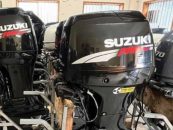The importance of a liquid damped compass cannot be overstated, as Nic Welch narrates his experience with a faulty one.
Twenty years ago, I learned a very valuable lesson in Moreton Bay.
My friend, Paul, and I had just purchased a second-hand 6m shark cat, which we were very proud of. It had everything we needed – 150L underfloor fuel tank, all safety gear, rocket launcher, live bait tank, sleeping bunks, and ample fishing room. It even came with a Lowrance fish-finder/GPS-chartplotter combo with the latest CMAP charts. The only thing wrong with the vessel was that its liquid damped compass had a small leak, and half of the oil the compass card floats in had vanished. But it still pointed north when the compass was level, and who cares, we had the GPS chartplotter anyway.
We were keen to show off our new toy to the girls, so we invited them along on a fishing trip to chase some snapper at Harry Atkinson Artificial Reef in the middle of Moreton Bay. The weather forecast was light southwesterlies in the morning, followed by 20-25 knot southeasterlies in the afternoon. We had 80L of fuel on board, which was more than ample for the seven-nautical-mile trip to Harry’s from Manly Boat Harbour.
So we set off and fished the reef for most of the morning, before heading to Mud Island to try our luck there. By early afternoon the southeasterlies had just started to kick in, so we decided we should head back to the reef and fish there for an hour or so before heading back home.
Well, that extra bit of wind seemed to put the snapper on the chew at Harry’s and we started landing some nice sized fish. A storm front was approaching from the south, but it didn’t look very severe, so we decided to keep fishing – the 6m shark cat could handle the chop easily, and we still had ample fuel to get us home safely.
After half an hour more fishing, some heavy rain was approaching quickly so we decided to pull anchor and start the trip home, just as a yacht sailed past us heading towards Tangalooma. Within two minutes of driving, our GPS chartplotter gave up the ghost and lost power, caused by a bad earth in the chartplotter wiring loom (which we were unable to troubleshoot at the time without a multimeter, as we didn’t carry a multimeter on board). No problem, we’ll just head towards Green Island as Manly Boat Harbour is southwest from the island.
Then the rain hit. It absolutely teamed down! Visibility was reduced to about 100 metres or less. Oh great, where has Green Island gone? No worries, we’ll use the compass. We work out from our paper chart that a bearing to the southern end of Green Island is approximately 230 degrees magnetic. This would have been fine to use our compass in completely flat water, but our compass only had half its liquid, so the compass card got stuck every time we hit a wave – rendering the compass completely useless.
Ok, no problem. Instead of heading towards the southern end of Green Island, let’s just head west until we hit the mainland, then follow the shoreline down to Manly. It’s 3pm, so we can follow the sun to the west. Or we can do the boy scout trick and find north by pointing 12 o’clock on my watch clock face at the sun halving the distance between the hour hand and 12 o’clock. Good idea, except it’s bucketing down rain still, completely overcast, and impossible to determine where the sun actually is.
Don’t panic girls! The forecast is a 25-knot southeasterly, and it’s certainly 25 knots! All we need to do is keep the chop from the southeasterly dead square onto our port side, and we’ll be heading southwest. We’ll be at Green Island in no time!
So off we set. After half an hour we still hadn’t seen Green Island, and determined that we must have overshot the island. No worries, we’ll keep heading southwest and eventually hit the mainland, probably around Wellington Point. After another half an hour and still no mainland in sight, we suddenly came across the same yacht, which sailed past us at the reef, the one that was heading towards Tangalooma at the time! It suddenly dawned upon me that as the storm front passed over, the wind must have swung slowly around from the southeast, through the west, and was now a north easterly – a complete 180 degree wind shift, causing us to drive a very wide semi-circle keeping the chop on our port side. So instead of being on Southern Moreton Bay, we were now on Northern Moreton Bay!
At this point, we had about 30L of fuel left, and quite possibly had a fuel emergency if we were indeed on Northern Moreton Bay. It’s still pouring rain, there’s an hour or so of light left, and are now officially lost. Needless to say, the girls were not impressed. We had no alternative but to drop anchor and ride out the weather until the rain passed, so we could see land and get our bearings. When the rain did eventually clear, we found ourselves halfway between Mud Island and the Little Sand Hills on Moreton Island.
We made it back to Manly Boat Harbour just before dark, with about a litre of fuel spare. I slept on the couch that night.
To this date, I always ensure I have a well-maintained liquid damped compass in my boat. The simple fact is a liquid damped compass and a paper chart are virtually fail-safe navigation tools, which you should never leave shore without. It only takes a small electrical fault – such as a bad earth in our case, or a blown fuse, or a corroded connector – to render your GPS chartplotter useless. If you use a mobile phone with navigation software, it only takes a splash of water or a flat battery to make that useless too. If you subsequently find yourself in trouble and without a known GPS position, how are you going to alert marine rescue organisations to your vessel’s position if you don’t have a compass on board? Informing marine rescue with the compass bearings of two or more landmarks enables your vessel position to be plotted on a chart with a high degree of accuracy.
NOTE: A liquid damped compass is only a “recommended” safety gear under Queensland, but it is still important to always have functional one on board. Even though the “recommended” safety gear is completely optional, you can still be fined for not carrying the recommended gear if you are in a situation where you actually need that particular piece of safety equipment. For example, an anchor is only recommended, not required. If your engine breaks down and you start floating out Jumpinpin Bar and need rescuing, you will likely be fined for not having an anchor on board.
(Feb-Apr2017)



























